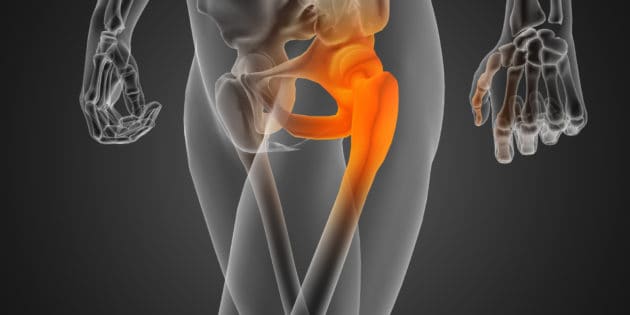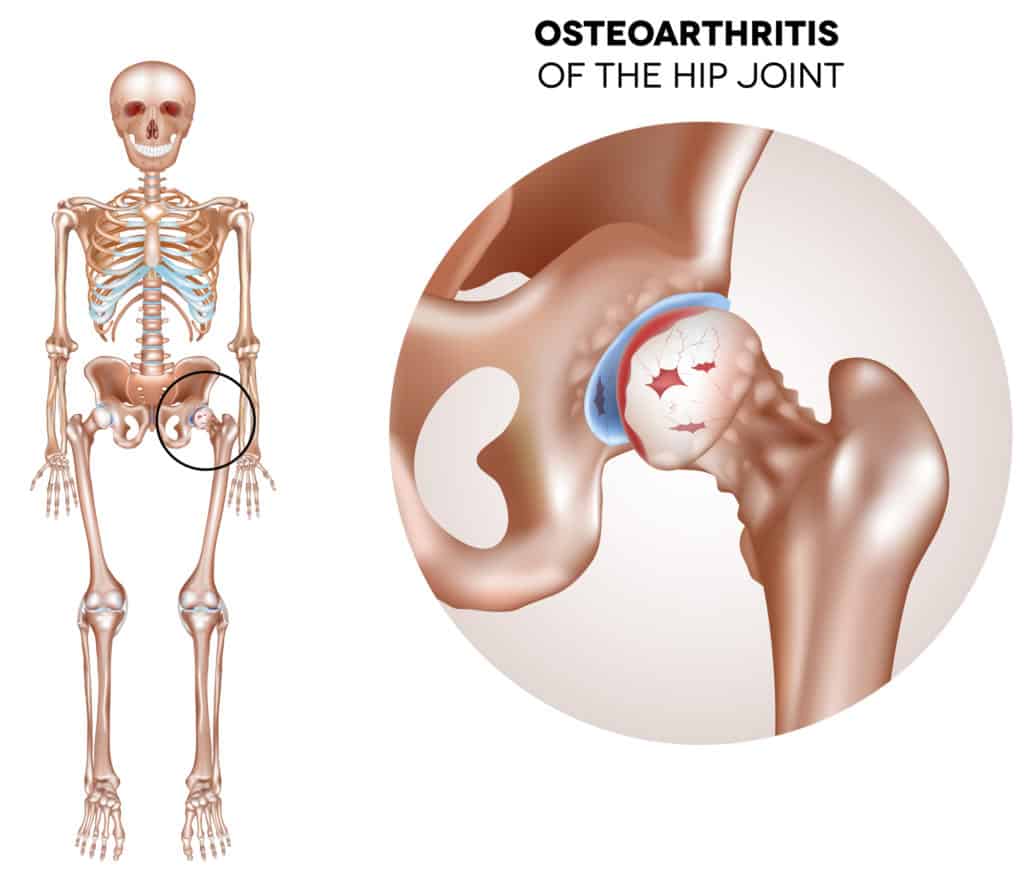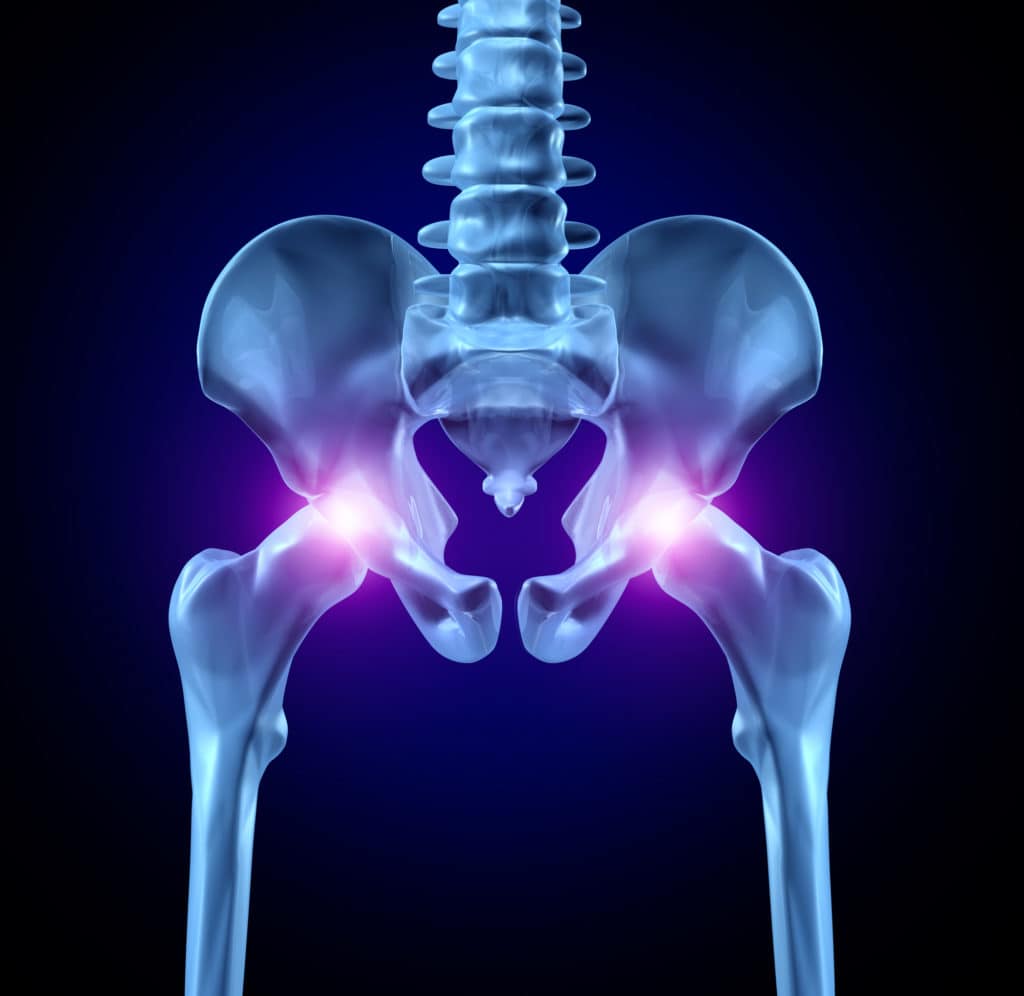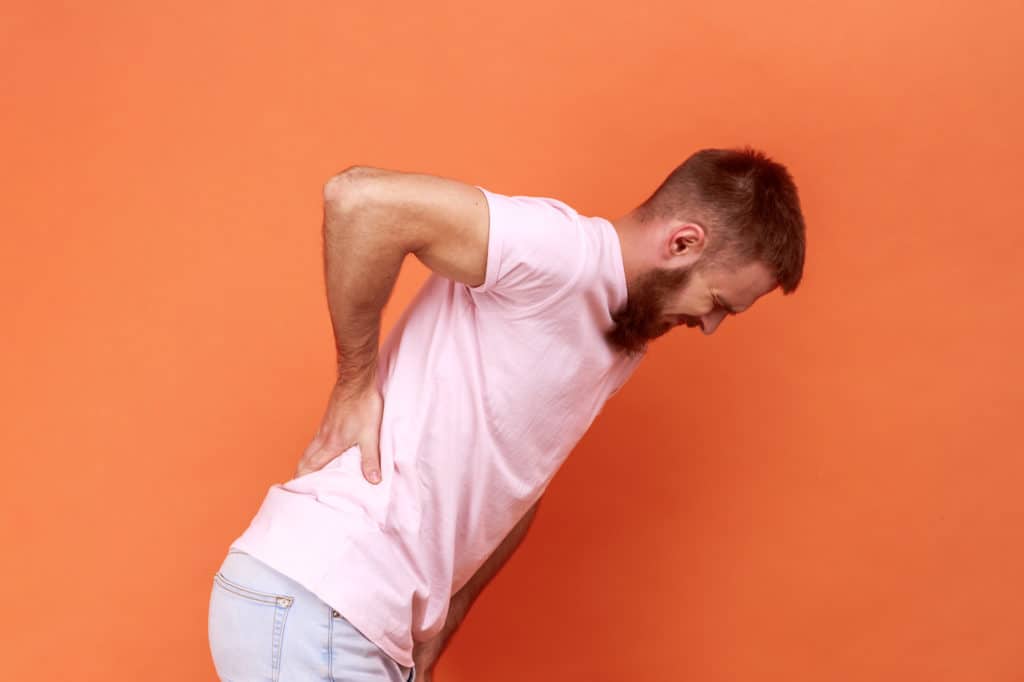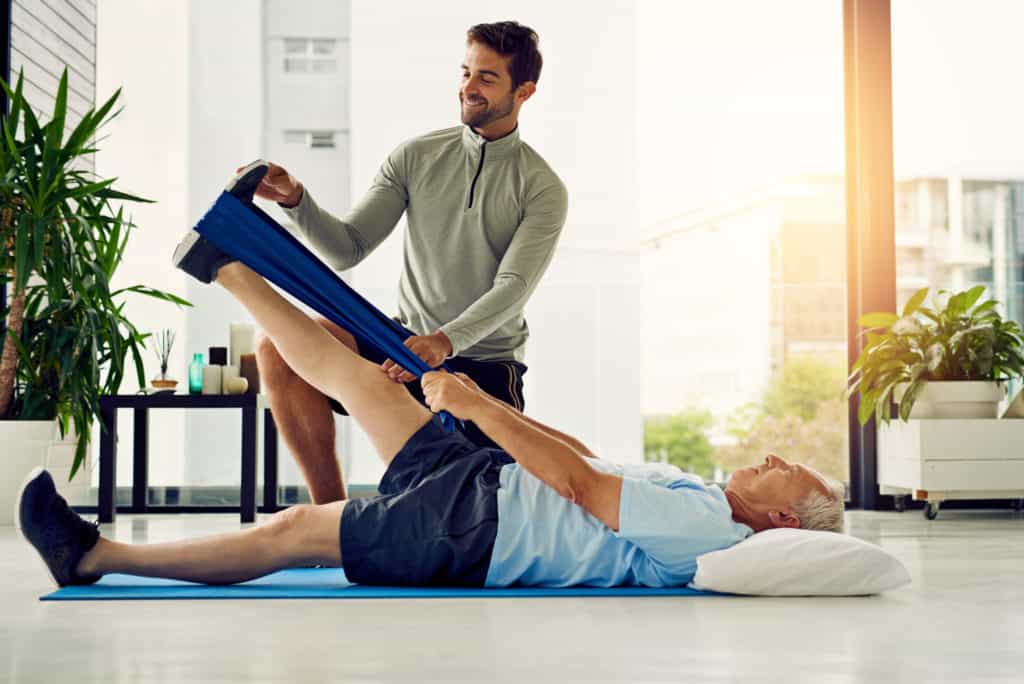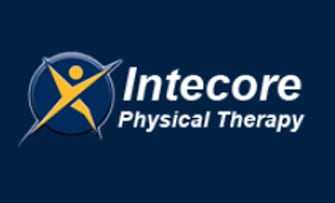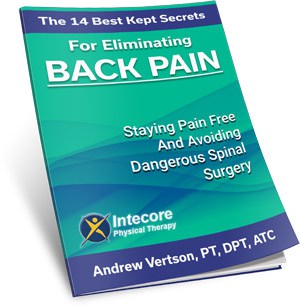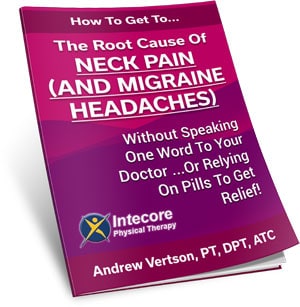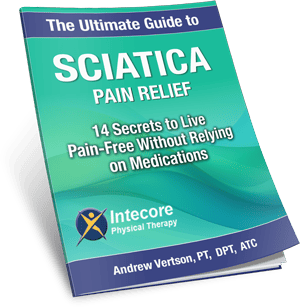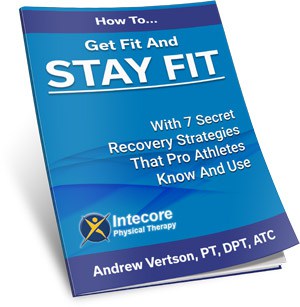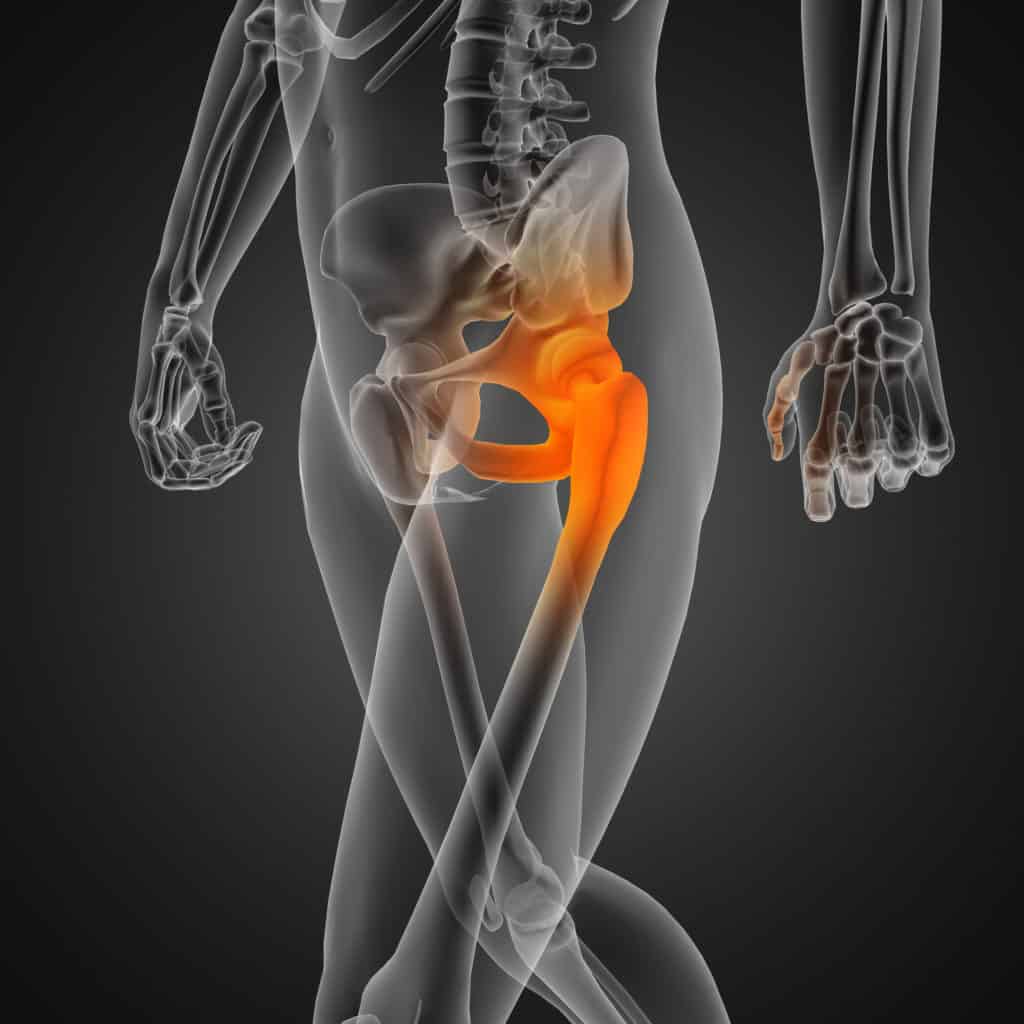
Modern daily life can put strain on our hip joints and our legs. And the more overweight you are, the higher the risk of joint pain.
Weight loss is often the best course of action in dealing with joint pain, and with almost 70% of Northern Americans being overweight, it’s common to leave the explanation at that.
Yet, it’s not only joint problems that cause issues in the hips and legs.
Hip pain can often radiate down the leg and masquerade as a source of discomfort in your knee or lower leg and, with doctors and specialists pushing the concept of joint stiffness and problems, it’s easy to generalize and cast your own diagnosis.
While joint stiffness shares a common denominator with any hip/leg issue, in that it makes daily activities harder to perform, there are often other factors at play.
Hip pain can stem from anywhere in the area, with this pain fed down the nerves that travel down into the lower leg. This can cause affliction in the thigh, the knee, and down towards your feet.
So what’s the potential diagnosis? Here are some of the most common causes of pain that radiate from the hip and down your leg.
Hip Osteoarthritis
Sounds like something big and scary, but osteoarthritis is the common wear-and-tear of the hip joint. This condition commonly causes a sensation of deep aching in the groin and hip area, but can spread through areas below your knee.
This kind of pain is often worse after a night’s sleep, or a prolonged period of resting, sitting, or physical movement. At the risk of causing the squeamish among us to wince, osteoarthritis can cause a grinding sound and a locking/sticking sensation to occur.
Labral Tear Of The Hip

Pain in the groin area is common, but can also creep across the hip and down each buttock. The discomfort that stems from a labral tear is felt at its worst after exercise or any other vigorous activities. As time’s onward march continues, and without treatment, this pain will become more prevalent throughout less strenuous movements, such as resting or sleeping.
Hip Impingement
The fancy latin name that your MD may use for this condition is (deep breath) Femoroacetabular Impingement. Sounds complex, right?
Hip impingement refers to intermittent pain and a dull ache around the hip and groin, and sharp pain after any form of movement – such as putting on shoes, getting out of a chair, or pivoting while getting dressed.
An impingement can occur after abnormal contiguity between the hip bone and its joints, often stemming from results caused by labral tears or hip osteoarthritis. The subsequent pain can shoot down from the hip to the front of your thigh, and also your knee.
Once the condition reaches a certain stage, without the proper treatment, the discomfort is inflamed by driving and sitting.
Iliopsoas Bursitis
Another scary sounding condition, but it’s nothing that can’t be fixed! The iliopsoas bursa sounds like a distant solar system, but the term refers to a small fluid-filled sac that sits in the front of your hip. If this sac becomes inflamed, it can cause serious pain in the groin and when moving your knee.
It’s not just the front of your hip where these sacs reside, with one also located on the side of the hip joint. As you could imagine, this pain radiates with ferocious consequences upon applying any form of pressure on the hip, and will channel that pain down the side of your thigh.
Look away if you are squeamish, but one domino-effect from this condition is Snapping Hip Syndrome, where clicking and snapping takes place upon moving the hip and joints. Not only can this snap be felt, but it can also be heard. And while on that subject…
External Snapping Hip
Certain causes of hip/leg pain can start from the side of the hip and work its way down through the thigh. One such cause is External Snapping Hip. Basically, this is caused when a tendon or segment of muscles slides across the Great Trochanter (the bone that protrudes from the side) that rests on the femur (your thigh bone).
This causes that alarming noise, and besides the associated pain, applies direct pressure over the Great Trochanter and creates painful sensations down the side of your legs.
Sciatica
This one is often the most common cause of hip pain being funneled down your leg. Sciatica refers to the sciatic nerve that runs between your hip and down each leg. To be exact, it runs down the back or your hip and the front, back, and sides of your leg.
Sciatica pain may be accompanied by tingling or numbness, or even muscle weakness. Sciatica is often associated with an underlying medical condition, such as a herniation of the lumbar disk and the pain may be intermittent or constant, mild or severe.
Either way, you should seek assistance from your physical therapist regardless of your pain threshold.
How Physical Therapy Can Help
Ok. Let’s get one thing straight. Chronic hip pain that comes on suddenly (or simply will not go away) and won’t respond to self care must be evaluated by a healthcare professional. Go and see your doctor. If the pain becomes unbearable and you feel in danger, get yourself to the emergency room.
Hip pain can cause other symptoms, too. These include numbness, a lack of feeling in your leg, loss of balance, swelling , nausea, and feverish temperatures. If you have any of these, seek immediate medical assistance. Especially if you have any form of underlying health conditions.
So, how can physical therapy help in all this? An experienced physical therapist will utilize their knowledge to reduce inflammation and pain, and improve your range of motion and physical function.
By following a physical therapy program, you’ll also be able to prevent a recurrence of any sciatica symptoms. Not to mention strengthening your pelvic muscles and keeping everything in place to prevent the conditions mentioned above.
While it’s impossible to restrict the effects of aging, with wear-and-tear of the hip joint being one such factor, physical therapy can keep pain at bay. Rather than becoming dependant on painkillers, which only mask the pain and don’t really solve anything.
A physical therapy plan also helps to improve your posture and core strength, which helps to prevent pain and keep your body in tip-top condition. Then there’s the ability to relieve nerve compression, improve flexibility, and normalize your body mechanics. It all sends signals to the brain that help manage chronic pain, too.
Stretching is all very important in this. And there are some stretches that you can do at home, to help relieve some pain symptoms.
Hip Stretch
If your activities require extensive sitting then stretching the muscles in the back of the hip is an exercise that may help with your symptoms. You can easily perform this stretch in a comfortable seated position.
Sit with your back straight and your legs extended out in front of you. Bring your right ankle up and rest it on your left knee, your right knee is bent and will look like the number four.
Taken both hands and grab behind the right knee and gently pull this toward your chest. You should feel tightness deep in the right buttock. When you feel this tightness, hold the position for 30 seconds and then extend the leg back to the floor. Repeat this stretch three times each leg.
Hamstring Stretch
Stretching the hamstring muscles may release the tension caused by the irritation of the sciatic nerve. One simple hamstring stretch may be performed by standing up straight, elevating one foot in front of you and resting it on an object (such as a step) high enough to cause a slight tightness in the back of your leg.
It is important not to raise your foot higher than your hip or high enough to cause a sharp pain in the leg. The top of your foot and knee should face toward the ceiling, and not turned outward.
Once your leg is in this position, put your hands on top of your thigh and gently put downward pressure to maintain nice stretch in your hamstring.
Caution: be very careful not to overstretch, because that could aggravate the sciatic nerve. Hold this stretch for 30 seconds and then lower the leg back to the floor. You should repeat this exercise three times each leg.
These two stretches can help you release tension and relieve sciatica pain in your buttocks, hips and legs. For best results, practice these exercises regularly for sciatica pain relief.
FAQs
Is walking good or bad for hip pain?
Walking is usually good for hip pain, as long as it’s done gently and doesn’t make the pain worse. It helps keep your joints moving, improves circulation, and strengthens the muscles that support your hips.
That said, if walking causes sharp pain or makes your hip feel worse, it’s a sign to slow down and check in with a physical therapist or doctor.
Can sitting too much cause hip pain?
Yes, sitting too much can definitely cause hip pain. When you sit for long periods, your hip flexor muscles (the ones at the front of your hips) can become tight and stiff, while the muscles that support your hips and glutes can weaken.
How do you relieve hip and leg pain?
To relieve hip and leg pain, try gentle stretches, light walking, or low-impact exercises like swimming. Applying heat or ice can also help, depending on whether it’s stiffness or inflammation.
If the pain continues, a physical therapist can create a plan to target the cause and get you feeling better.
How do I know if my hip pain is muscle or joint?
If your hip pain worsens with movement and improves with rest, it’s often joint-related. Muscle pain usually feels more like soreness or tightness and may flare up during specific movements or after activity.
How do I know if it’s my hip or sciatica?
Hip pain is usually felt in the groin, front of the thigh, or outer hip, while sciatica causes sharp, shooting pain that travels down the back of your leg.
Do you need more help with your low back pain?
Contact us for a FREE Discovery Visit (Click Here to Schedule) to learn how we can help!
———————————————————————
This is an expanded and updated version of an article from Intecore dating April 12, 2017. You can find the original article here.
- What Is Gout? Why It Happens and What You Can Do About It - November 17, 2025
- 3 Essential Back-Saving Tips You MUST Know Before Any Workout - November 14, 2025
- Are You Experiencing Shoulder Pain from Sleeping Wrong? - October 21, 2025

